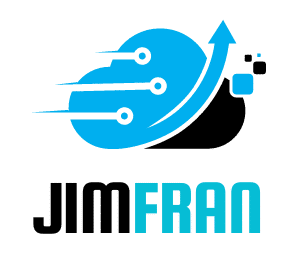What are the techniques for optimizing the performance of AI algorithms in real-time applications?

Artificial intelligence (AI) is revolutionizing the realm of technology and decision making across various industries. As the demand for real-time applications surges, optimizing the performance of AI algorithms becomes crucial. This article delves into the diverse techniques for enhancing AI algorithm performance in real-time scenarios, focusing on machine learning, neural networks, and optimization algorithms.
Understanding Real-Time AI Applications
Real-time AI applications demand swift and accurate responses, often within milliseconds. In computer vision, for instance, timely data processing is essential for applications like autonomous vehicles and surveillance systems. Similarly, intelligent systems in healthcare and finance require real-time decision making to ensure optimal outcomes.
Cela peut vous intéresser : Why choose Evernex e-shop for reliable, refurbished IT solutions?
The challenge lies in balancing accuracy and speed. High-performance learning algorithms and model optimization techniques are pivotal in achieving this equilibrium. Real-time optimization techniques ensure that AI models function efficiently without compromising on precision. Let’s explore some of these techniques.
The Role of Model Optimization
Model optimization is the cornerstone of enhancing AI performance. It involves refining a learning model to ensure it processes data swiftly while maintaining high accuracy. Various optimization techniques can be employed to achieve this.
A découvrir également : What are the steps to develop a secure and efficient machine learning model for predictive maintenance?
Gradient Descent and Its Variants
Gradient descent is a popular optimization algorithm used to minimize the loss function in machine learning models. By adjusting the model parameters iteratively, it aims to find the optimal point that reduces prediction errors. Variants like Stochastic Gradient Descent (SGD) and Mini-Batch Gradient Descent offer different approaches to update the parameters, striking a balance between speed and precision.
SGD updates the parameters for each training example, making it suitable for large datasets and enabling faster convergence. On the other hand, Mini-Batch Gradient Descent updates parameters for a small subset of training examples, providing a middle ground between batch and stochastic gradient descent. These variants enhance the learning rate, thereby improving the model’s performance in real-time applications.
Learning Rate Optimization
The learning rate plays a crucial role in the optimization process. It determines the step size at each iteration while moving towards a minimum of the loss function. A too-high learning rate can cause the model to overshoot the optimal point, while a too-low learning rate can result in a prolonged training process.
Techniques like adaptive learning rates (e.g., AdaGrad, RMSProp, and Adam) adjust the learning rate based on the model’s performance during training. These methods enable the model to converge more efficiently, enhancing its real-time performance.
Leveraging Neural Networks for Real-Time Applications
Neural networks are at the heart of many AI applications, especially those requiring real-time data processing. They mimic the human brain's learning process, making them suitable for complex tasks like image and speech recognition.
Deep Learning Techniques
Deep learning, a subset of machine learning, involves training neural networks with multiple layers. These deep neural networks can capture intricate patterns in data, making them ideal for tasks requiring high accuracy. However, the complexity of deep learning models can pose challenges in real-time applications.
To address this, techniques like model pruning and quantization are employed. Model pruning involves removing redundant neurons and connections, reducing the model’s size and improving its processing speed. Quantization reduces the precision of the neural network weights, decreasing the computational load while maintaining performance.
Convolutional Neural Networks (CNNs)
Convolutional Neural Networks (CNNs) are a type of deep neural network specifically designed for processing grid-like data, such as images. They are highly effective in computer vision applications, where real-time image recognition is crucial.
Optimizing CNNs for real-time applications involves techniques like model compression and parallel processing. Model compression reduces the number of parameters in the network, thereby decreasing the computational requirements. Parallel processing utilizes multiple processors to distribute the computational load, enhancing the network’s performance.
Optimization Algorithms in Practice
The application of optimization algorithms extends beyond theoretical frameworks. Real-world implementation requires a strategic approach to ensure the AI algorithms perform optimally in real-time scenarios.
Fuzzy Logic for Decision Making
Fuzzy logic is an approach that allows for handling uncertain or imprecise information. Unlike traditional binary logic, fuzzy logic enables AI systems to make decisions based on degrees of truth. This is particularly useful in real-time applications where data may be ambiguous or incomplete.
Integrating fuzzy logic with neural networks can enhance the system’s ability to process real-time data and make informed decisions. For example, in autonomous driving, fuzzy logic can help the system interpret sensor data more accurately, improving decision making in complex environments.
Reinforcement Learning
Reinforcement learning is a type of machine learning where an agent learns to make decisions by interacting with the environment. It receives rewards or penalties based on its actions, enabling it to improve over time. This approach is beneficial in dynamic, real-time applications where the environment constantly changes.
Reinforcement learning algorithms, such as Q-learning and Deep Q-Networks (DQNs), have demonstrated remarkable success in real-world applications. By continuously learning and adapting, these algorithms can optimize their performance, ensuring swift and accurate decision-making in real-time scenarios.
Enhancing Performance Through Hardware Optimization
Beyond algorithmic improvements, hardware optimization plays a vital role in enhancing the performance of AI models in real-time applications. Leveraging advanced hardware can significantly reduce processing time and boost performance.
Graphics Processing Units (GPUs)
Graphics Processing Units (GPUs) are specialized hardware designed to handle parallel processing tasks. They are highly efficient in processing large volumes of data simultaneously, making them ideal for training and deploying AI models.
In real-time applications, utilizing GPUs can drastically reduce the time required for data processing, enabling faster decision making. For instance, GPUs are widely used in computer vision tasks, where they accelerate the processing of high-resolution images and videos.
Tensor Processing Units (TPUs)
Tensor Processing Units (TPUs) are specialized hardware accelerators designed by Google specifically for executing machine learning models. They offer high performance and efficiency, particularly for tasks involving deep learning models.
TPUs excel in handling large-scale computations, making them suitable for real-time AI applications. By leveraging TPUs, organizations can achieve significant improvements in the performance and speed of their AI models.
Optimizing the performance of AI algorithms in real-time applications is a multifaceted endeavor. Techniques such as gradient descent and learning rate optimization play a crucial role in refining machine learning models. Neural networks and deep learning techniques, including model pruning and quantization, enhance the efficiency of AI systems. Additionally, integrating fuzzy logic and reinforcement learning provides robust decision making capabilities.
Moreover, leveraging advanced hardware like GPUs and TPUs significantly boosts the performance of AI models, ensuring they meet the demands of real-time applications. By employing these optimization techniques, you can ensure your AI algorithms are not only accurate but also swift, making intelligent systems more effective and reliable.
In essence, the key to optimizing AI performance lies in a balanced approach that combines algorithmic enhancements with strategic hardware utilization. By doing so, you can effectively harness the power of artificial intelligence to revolutionize real-time applications across various domains.
